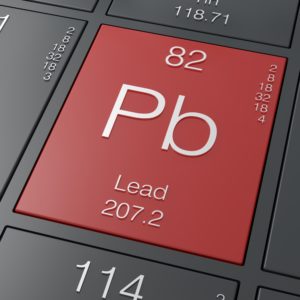 Lead does not come under the COSHH regulations. There are separate regulations covering Lead and the problems caused by lead. Problems with lead are not just in construction but lead products can be found in all workplaces.
Lead does not come under the COSHH regulations. There are separate regulations covering Lead and the problems caused by lead. Problems with lead are not just in construction but lead products can be found in all workplaces.
There are many works in industrial processes which create lead dust, fume or vapour. Some processes include:
- Stripping of old lead paint from doors, windows
- Recovering lead from scrap and waste
- Lead-acid battery manufacture and recycling
- Manufacturing leaded glass; manufacturing and using pigments, colours and ceramic glazes; working with metallic lead and alloys containing lead, for example, soldering; Some painting of buildings or vehicles
- Recycling of televisions or computer monitors which contain Cathode Ray Tubes
Some ways your body absorbs lead are:
- Breathe in lead dust fume or vapour
- Swallow any lead, for example, if you eat, drink, smoke or bite your nails without washing your hands and face. There are different ways that you should do to protect your health:
- Make sure you have all of the information and training you need to work safely with lead
- Use all of the equipment provided by your employer and follow the instructions for use
- Make sure all protective equipment fits correctly and is in good condition
- Clear up and get rid of any lead waste at the end of the day
- Wear any necessary personal protective equipment or clothing and return it to the proper place provided by your employer and report any damaged PPE
- Only eat and drink in designated areas that are free from lead contamination and wash your hands and face and scrub your nails before eating.
Employers have responsibilities as well, these include:
- Make suitable and sufficient risk assessments
- Identify and implement control measures
- Record the significant findings of the risk assessment
- Introduce control measures and carry out air monitoring if exposure is ‘significant’
- Introduce control measures to ensure that the amount of lead in the air in the breathing zone of an employee does not exceed the appropriate Occupational Workplace Exposure Limit
- Ensure high standards of personal hygiene and provide suitable and sufficient washing facilities.
- Provide clean areas for employees to eat and drink
- Place employees under medical surveillance if exposure is ‘significant’
If the action level is reached or exceeded, an employer must carry out an urgent investigation to find out why and review control measures.

Pingback: Welfare At Work comes under the health as safety umbrella as it is
Pingback: Confined spaces are a special area of health and safety regulations